GCSE PSYCHOLOGY AQA Paper 2: Brain and neuropsychology
1/33
There's no tags or description
Looks like no tags are added yet.
Name | Mastery | Learn | Test | Matching | Spaced |
|---|
No study sessions yet.
34 Terms
The divisions of the human nervous system
CNS:
-Coordinates incoming sensory information
-Sends response (instructions) to other parts of the nervous system
PNS:
-Network of nerve fibres
-Connects various parts of the body with the CNS
Divisions of the PNS
Somatic nervous system:
-Collects information from senses and internal organs
-passes info to the CNS
-receives instructions for movement from CNS
Autonomic nervous system:
-Collects information from our senses and internal organs and passes it to the CNS
-Deals with emotions, responds to stress and body changes (ie during puberty)
Divisions of the Autonomic nervous system
Sympathetic nervous system:
-Prepares for action
-Fight or flight
-Increases heart and breathing rate
-Dilates pupils
-Inhibits saliva production and digestion
Parasympathetic nervous system:
-Returns you to homeostasis
-Rest and digest
-Decreases heart and breathing rate
constricts pupils
-Stimulates digestion and saliva production
Outline James Lange theory of emotion
- EVENT-AROUSAL-INTERPRETATION-EMOTION
EVENT:
-Stressor or threat activates hypothalamus
-Instructs sympathetic division of ANS
AROUSAL:
-Adrenaline is released causing physiological arousal
-increase in bodily activity (beginning of fight or flight response)
INTERPRETATION:
-brain interprets physiological changes
EMOTION:
-Interpretation results in feeling of an emotion
-If you do not feel any physiological changes you will feel no emotion
Sensory neurones
-carry messages from PNS to CNS
-Long dendrites and short axons
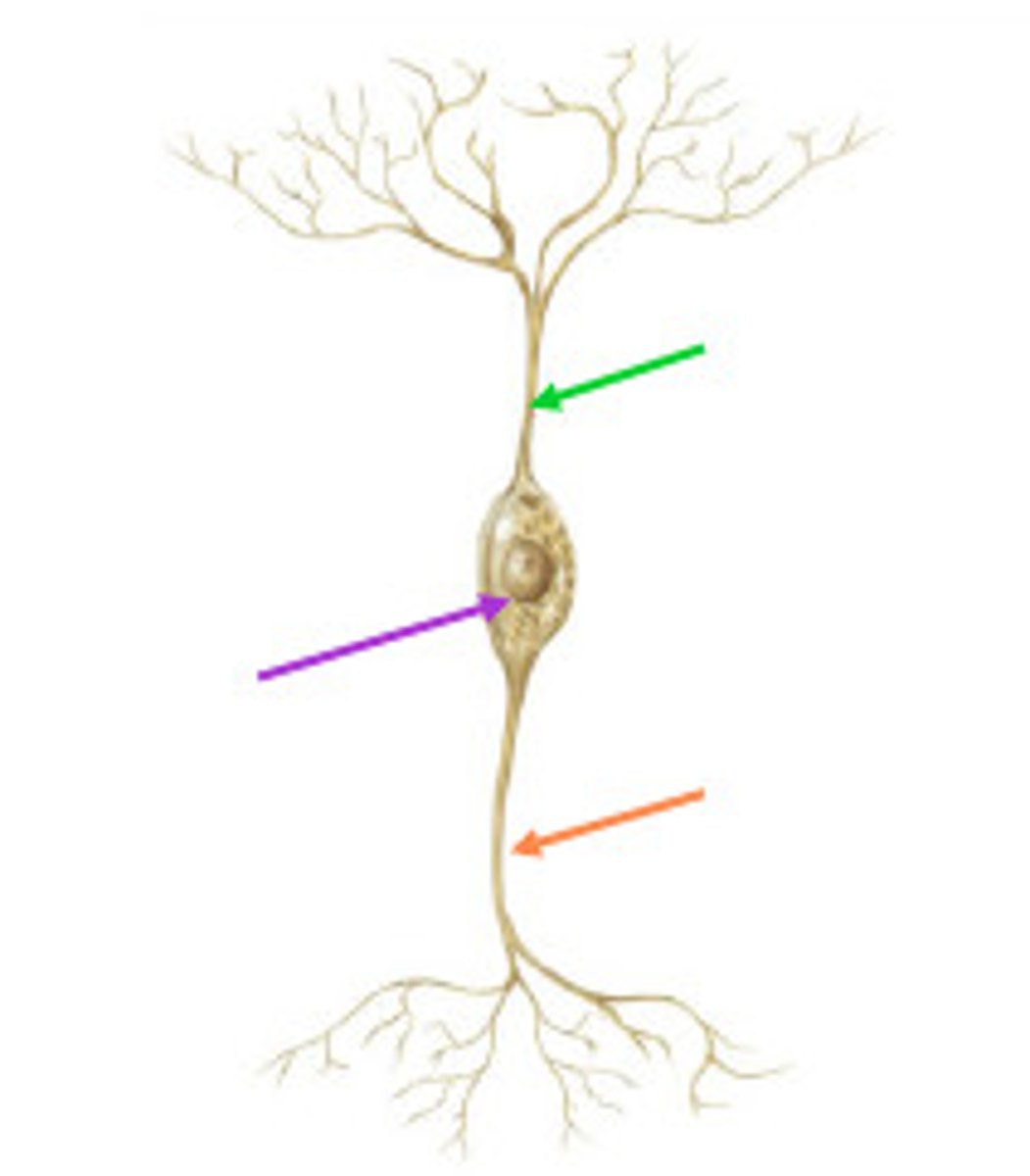
Relay neurones
-connect sensory and motor neurons
-connect to other relay neurons
-short dendrites and short axons
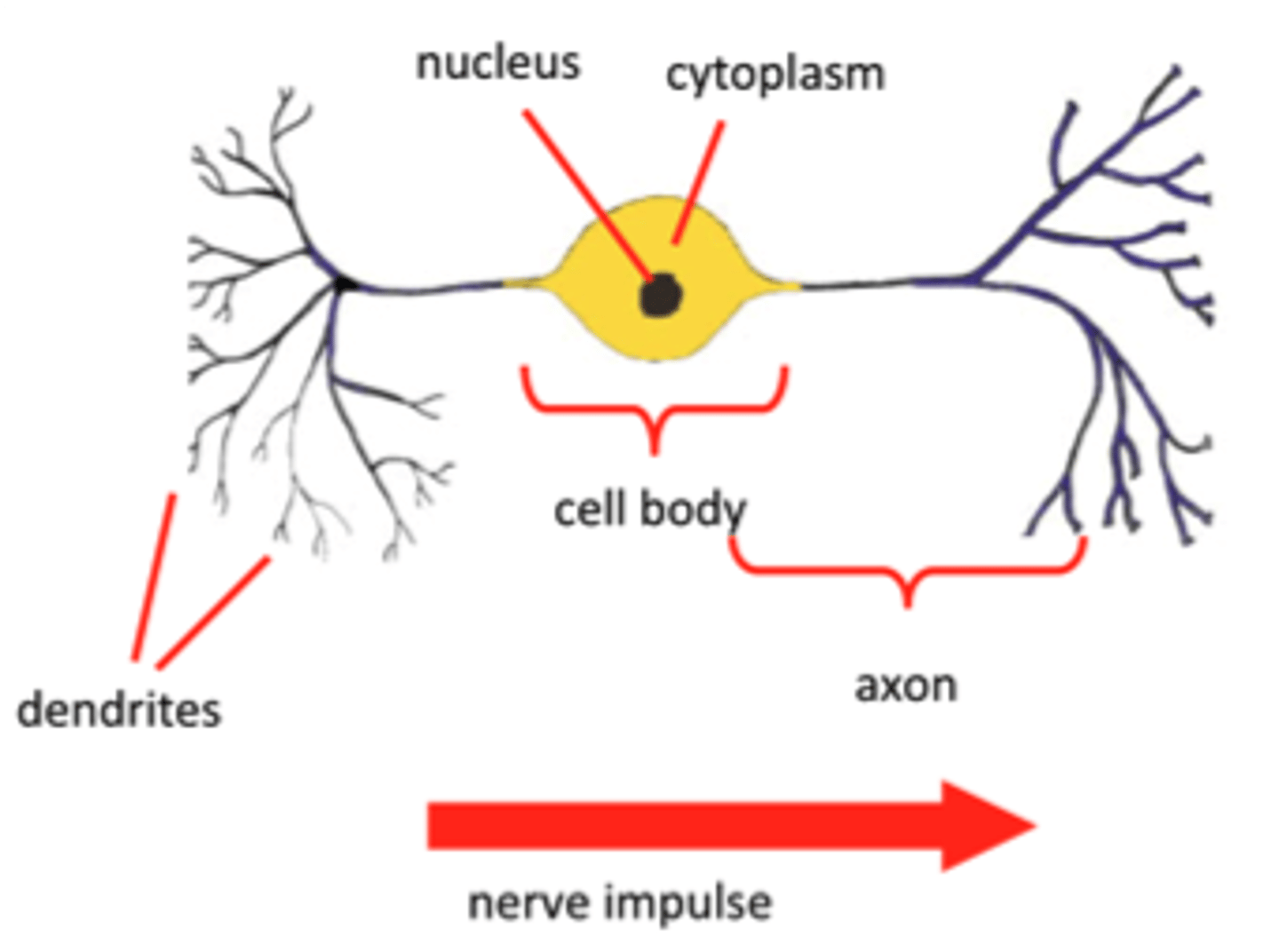
Evaluate James Lange theory
+ Real life examples of emotions following physiological arousal(phobias or panic disorders)
-association formed between situation and emotion
-emotion and avoidance occur due to the physiological reaction
-Cannon Bard theory:
-we experience emotion at the same time as the physiological change(blushing)
-some physiological changes don't result in an emotion(exercising)
-Too simplistic:
-Two factor theory of emotion:
physiological arousal doesn't come before emotion
-we need social cues to label emotion
Motor neurones
-carry messages from CNS to effectors(muscles of glands)
--short dendrites and long axons
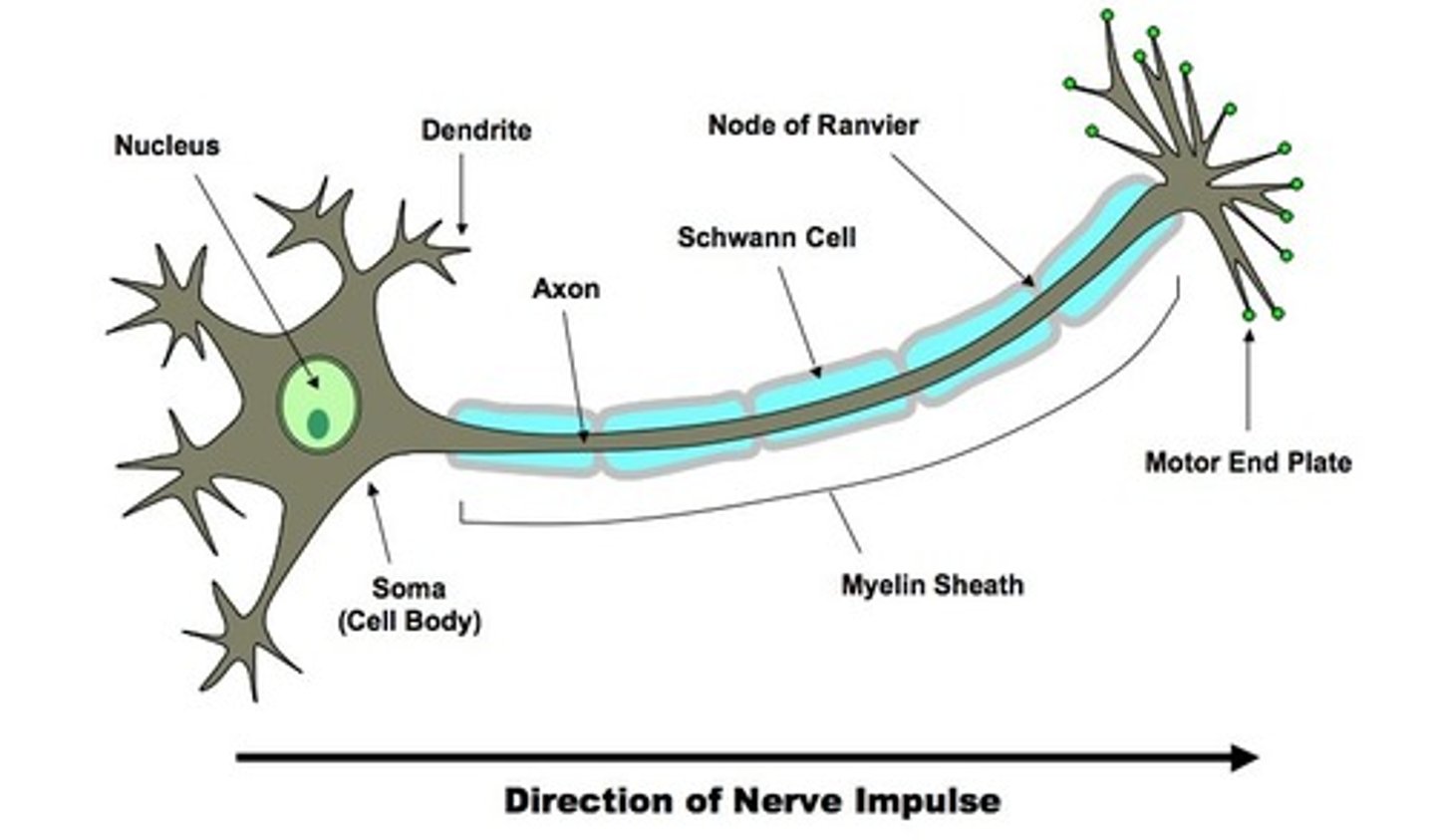
Outline Synaptic transmission
-Neuron in resting state
-inside cell is negatively charged compared to outside
-Neuron fires
-electrical charge in cell changes for split second causing action potential
-Neurotransmitter crosses synaptic cleft:
-attaches to next neuron at postsynaptic receptor sites (dendrites of next neuron)
-Chemical message turned back to electrical impulse
-travels down next neuron
-Remaining neurotransmitters in the gap are broken by enzymes and reabsorbed by postsynaptic neuron to be reused.
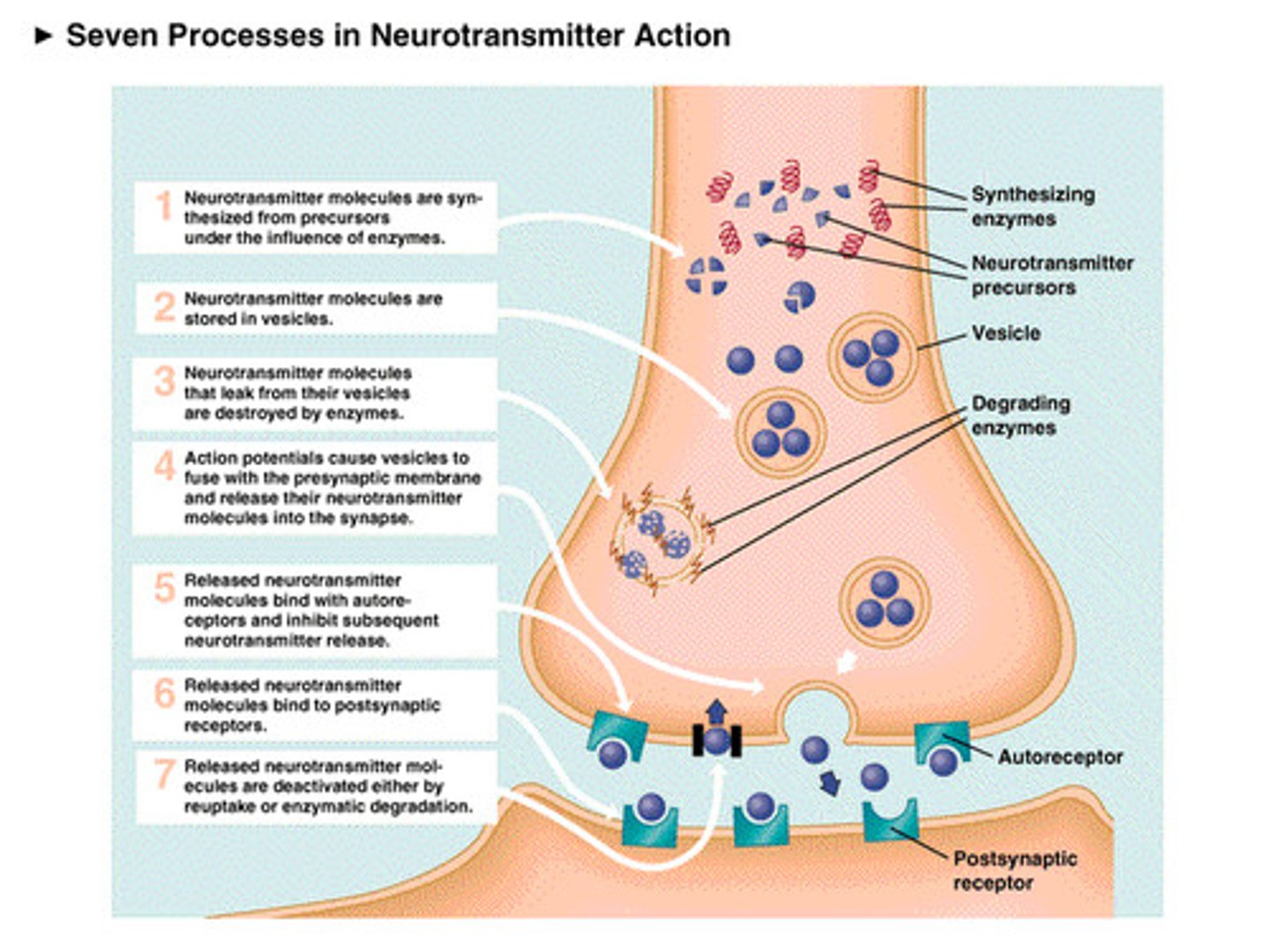
Define excitation and inhibition
-Neurotransmiters = excitatory or inhibitory
-excitatory: increases neuron's positive charge, makes it more likely to fire
inhibitory: increases neuron's negative charge, makes it less likely to fire
Outline Hebb's theory
-brain is plastic:
-can adapt, change structure and create connections as we learn at any age
-every time you have a new thought it leaves an engram:
-engram (trace) will quickly fade unless you practice and rehearse
-During learning cell assemblies fire together:
-the more this happens the stronger the synaptic connections between them becomes
-leads to the group being more efficient
-neurons change physically to more effectively manage the new learning (neural growth)
-"Cells that fire together, wire together"
-rewiring: more efficient and effective brain develops as learning takes place.
Evaluate Hebb's theory
+has scientific basis:
-shows it's possible to study larning through looking at brain processes
-provided scientific and objective basis for understanding behaviour
+Some ideas are applicable to education
-more stimulating the environment the more cell assemblies grow and learn
-raised rats: rats in most stimulating environment were better able to find their way around the maze as adults
-Reduced to a neuronal level:
-reductionist theory
-learning is complex and involves different levels of understanding
-complete theory needs to discuss other factors that affect learning
Where are the frontal lobe, temporal lobe, parietal
lobe, occipital lobe and cerebellum.
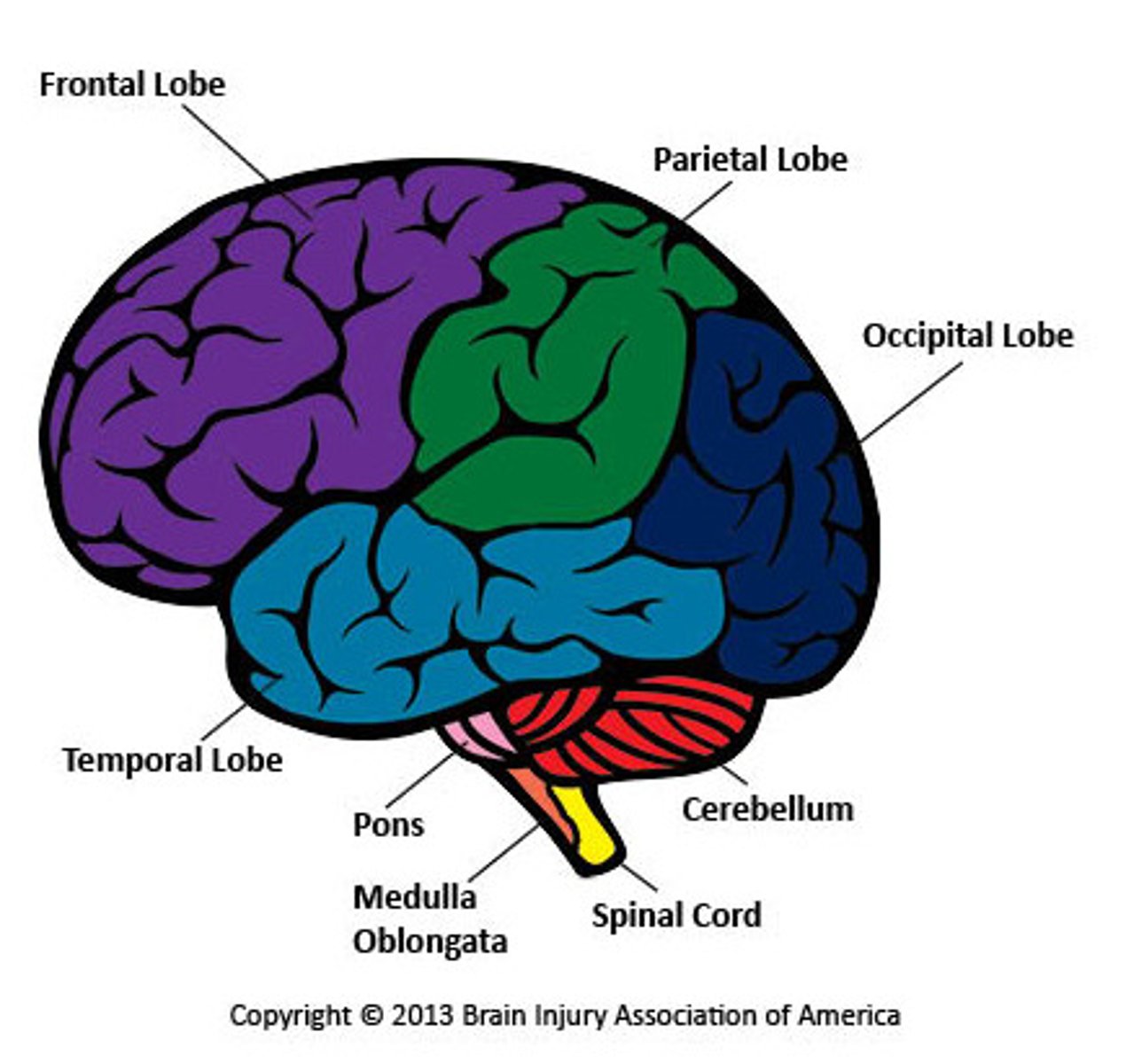
Basic function of frontal lobe
-controls thinking, planning and the motor area
-contains Broca's area
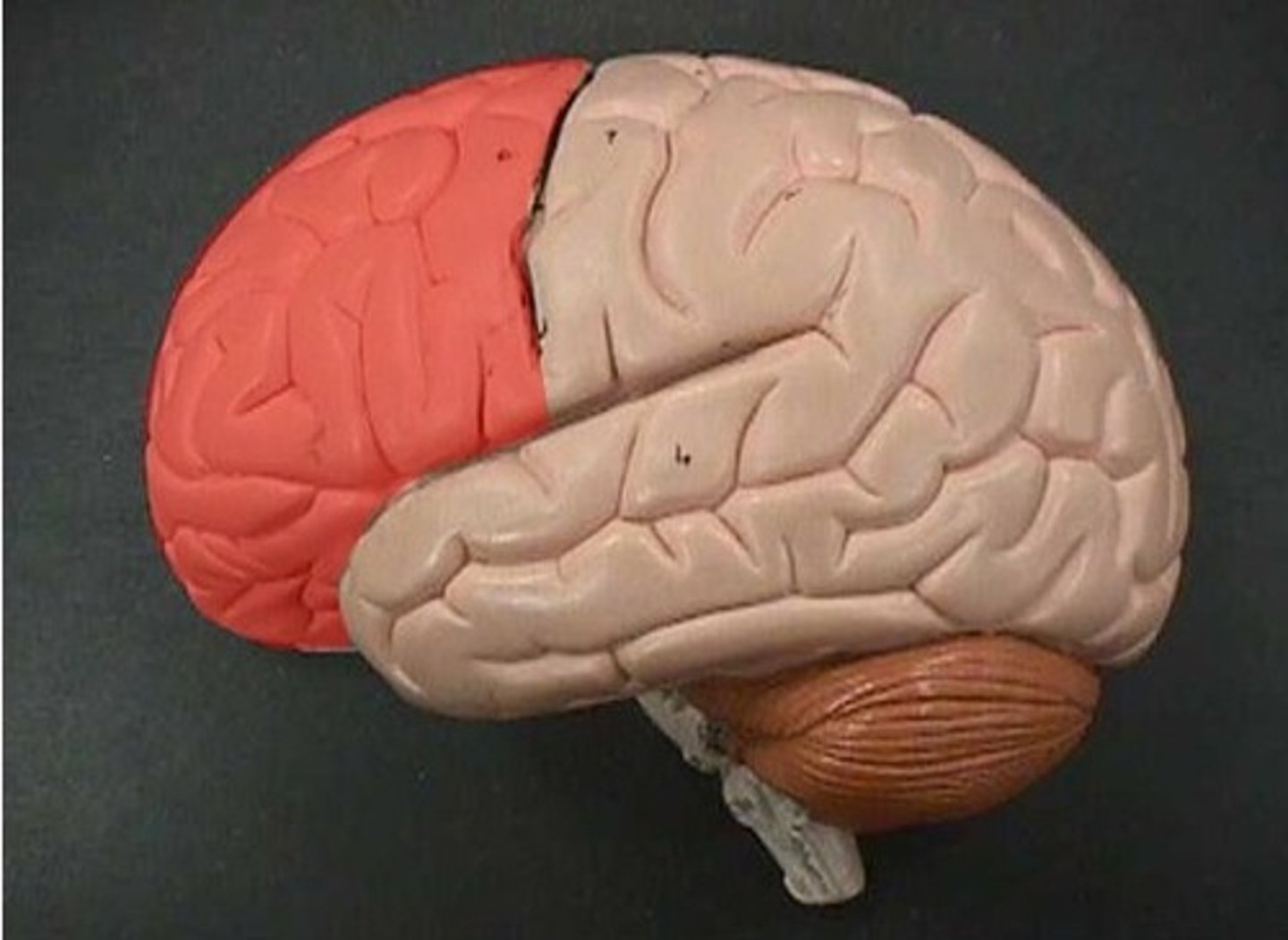
Basic function of temporal lobe
-Includes auditory lobe and wernicke's area
-processes auditory information
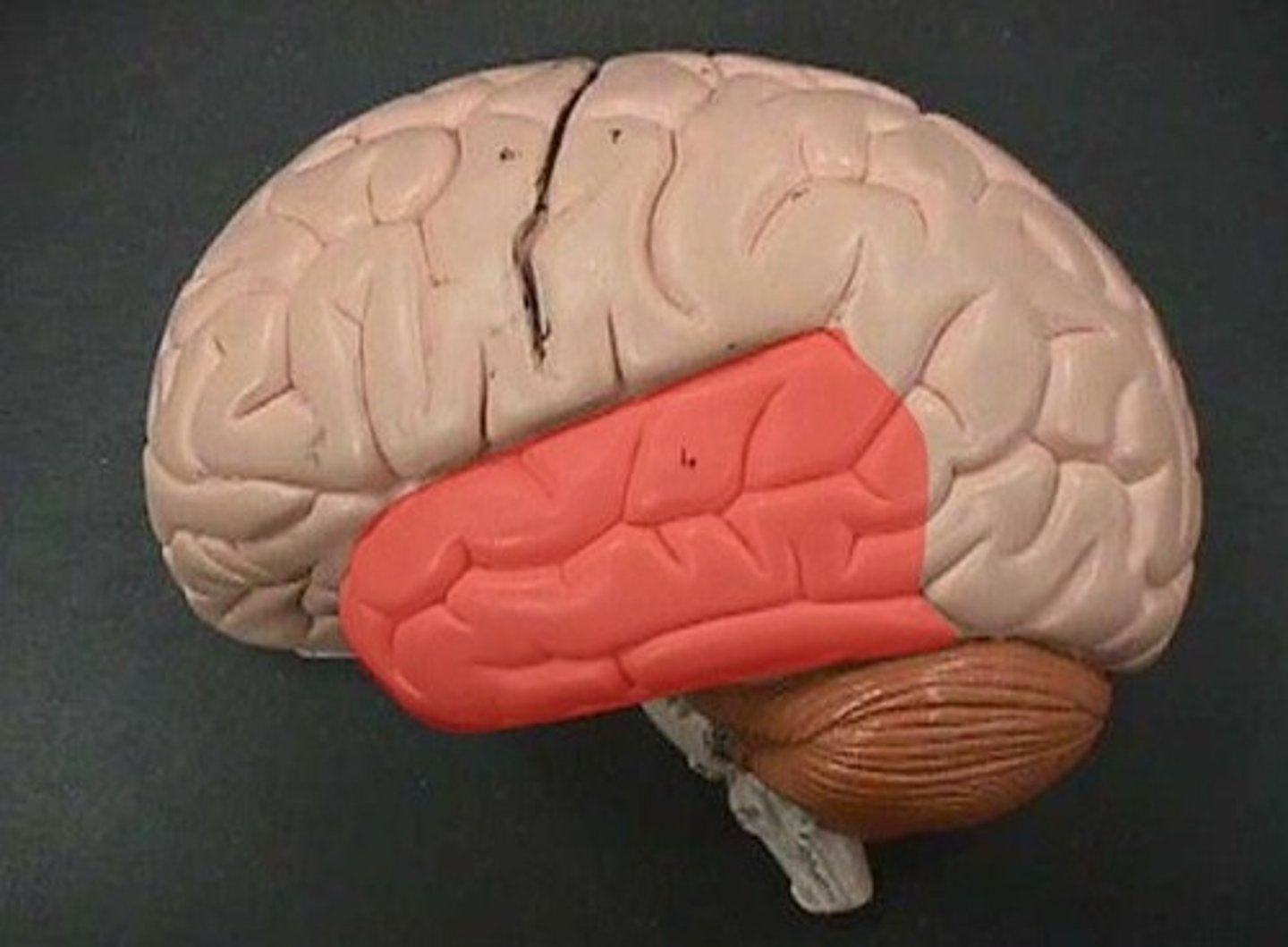
Basic function of parietal
lobe
-sepatef from frontal lobe by central sulcus
-at the front of the parital lobe is the somatosensory area
-processes sensory info, visual information, processing language and mathematics.
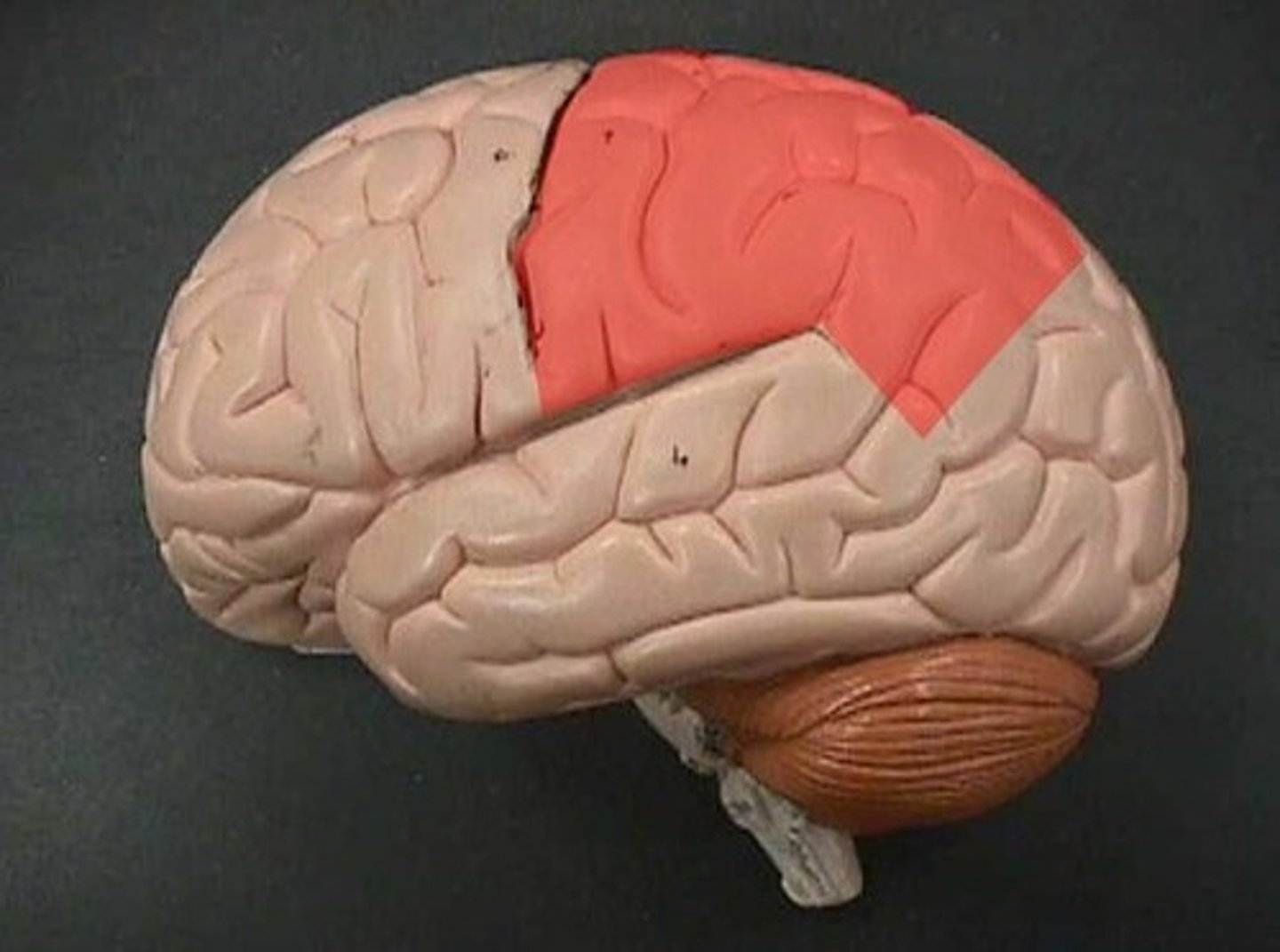
Basic function of occipital lobe
-contains the visual area
-each eye sends info to the visual areas either side of the brain
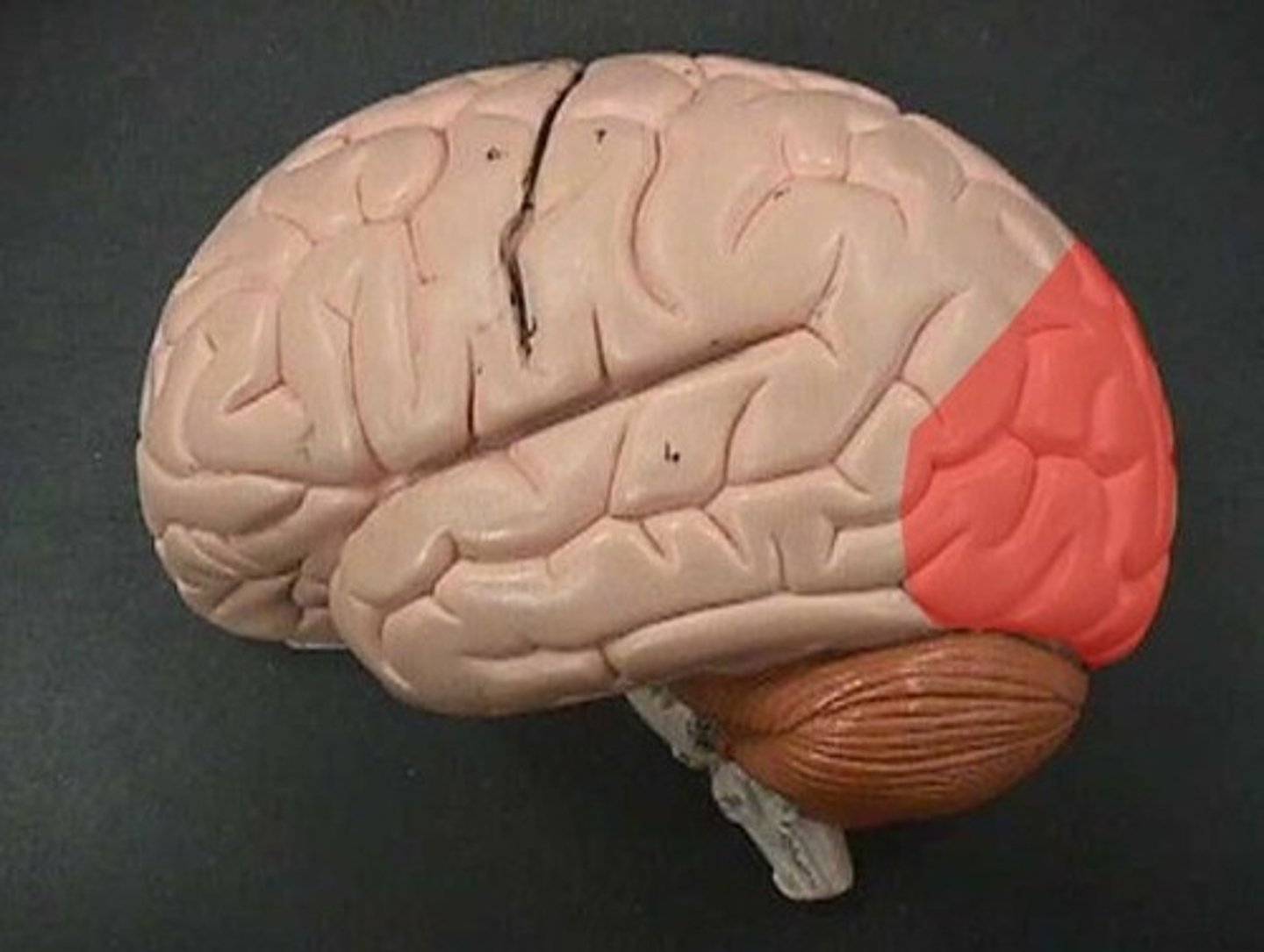
Basic function of cerebellum
-attention, language movement
-receives info from spinal cord&parts of the brain to help coordination, balance and fine movement
-Has 50% of brain's neurons but 10% of it's mass
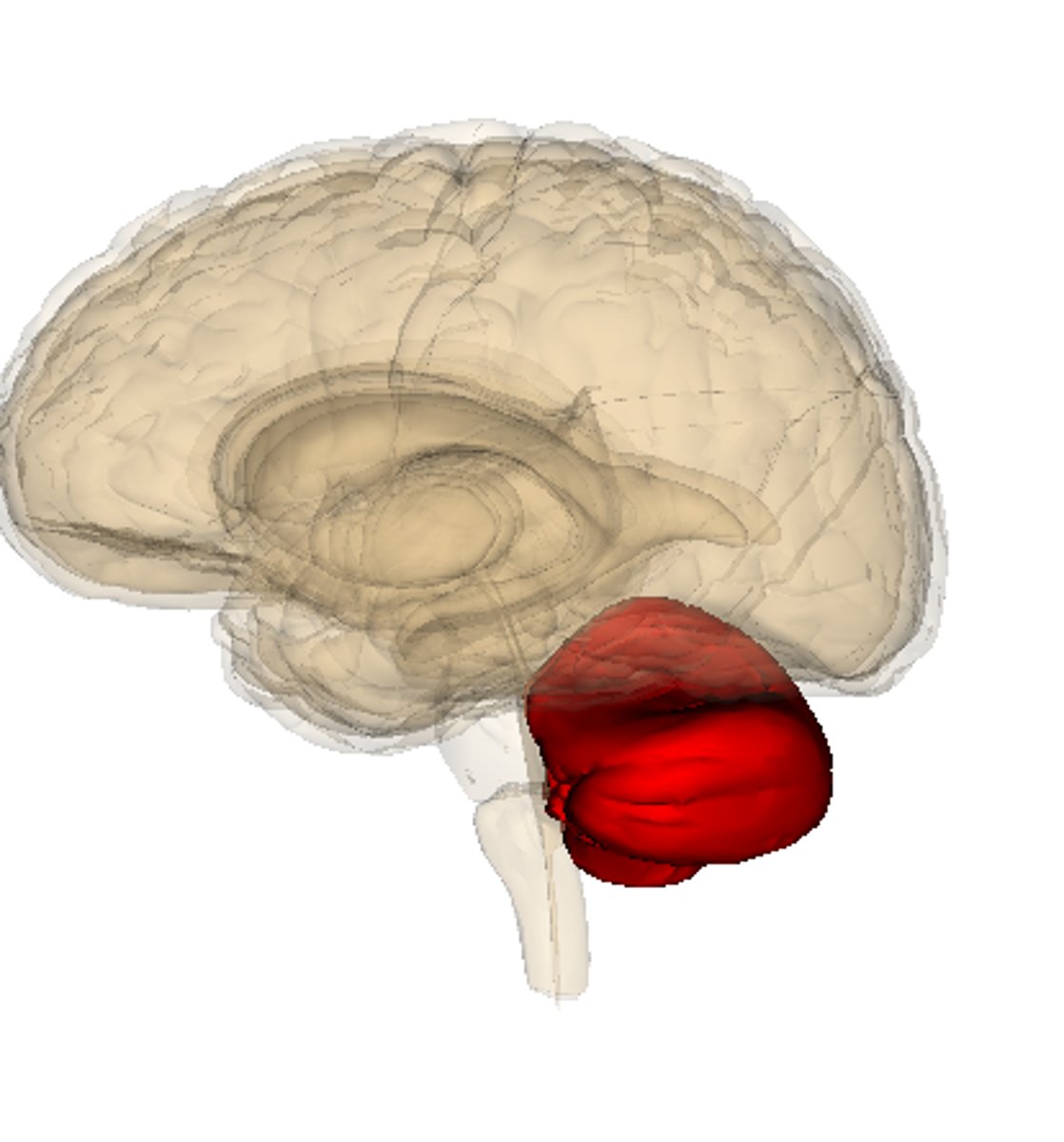
Localisation of function in the brain
when particular areas of the brain do particular jobs so if certain parts are damaged the function it controls may be affected or lost
motor area
-controls deliberate movement
-uses motor neurons to send messages to our muscles
-active parts of the body have a larger share of the it
-One hemisphere controls the opposite side of the body's fine movement
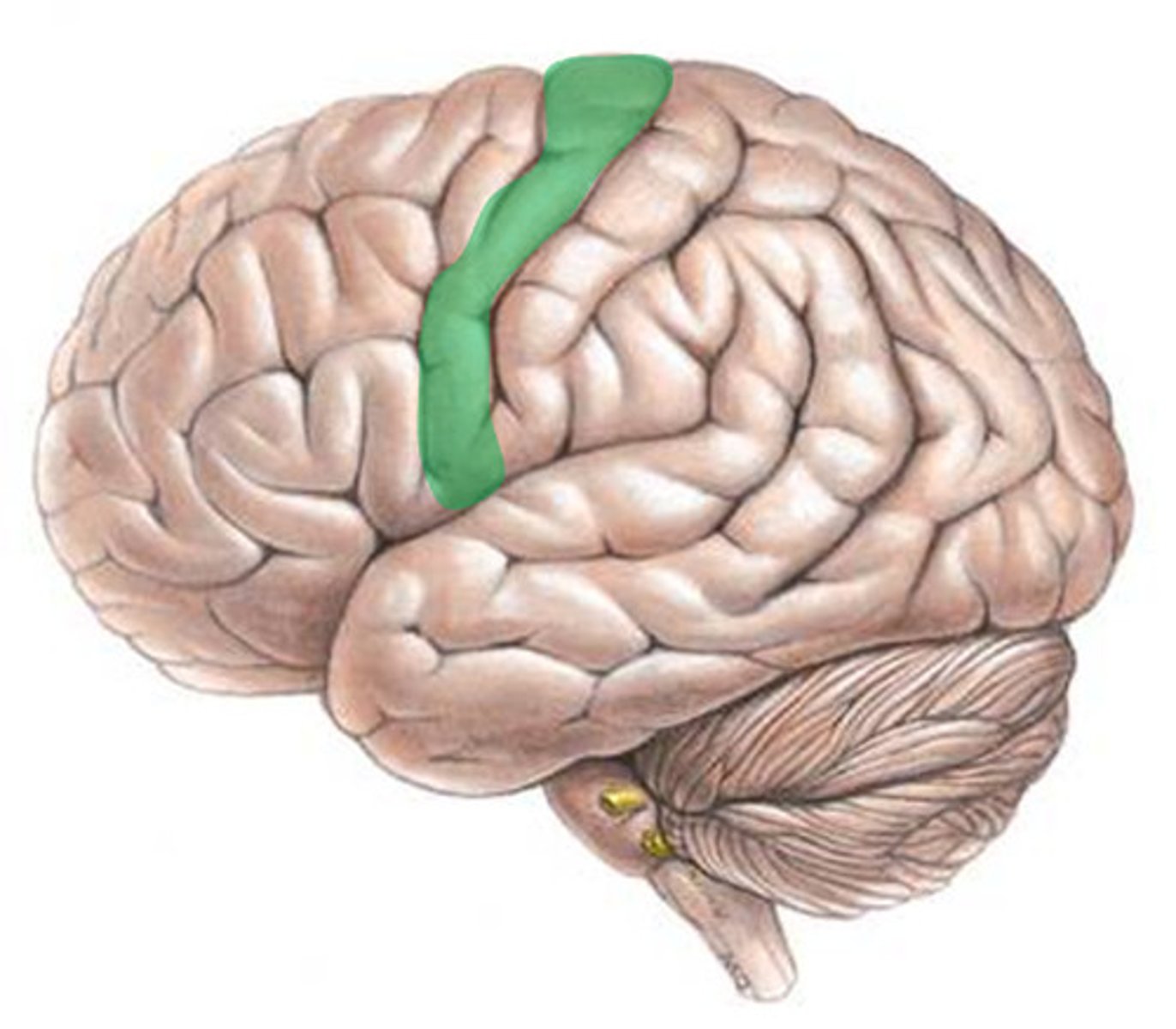
somatosensory area
-deals with touch
-most sensitive parts take up most 'space'
-receives all sensory input from the body
-One hemisphere controls the opposite side of the body's fine movement
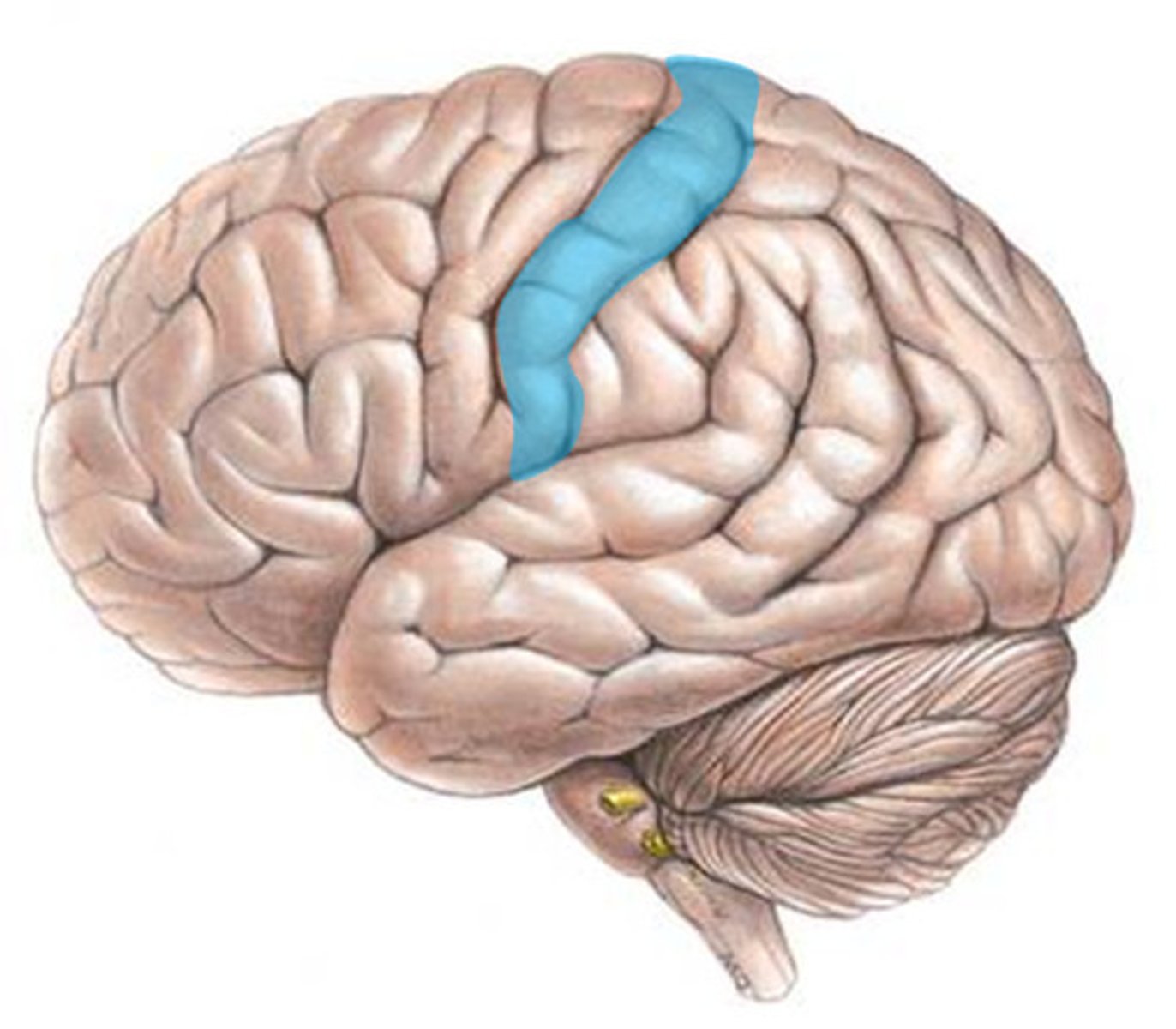
visual area
-each eye sends info to visual areas on each side of the brain through the optic nerves
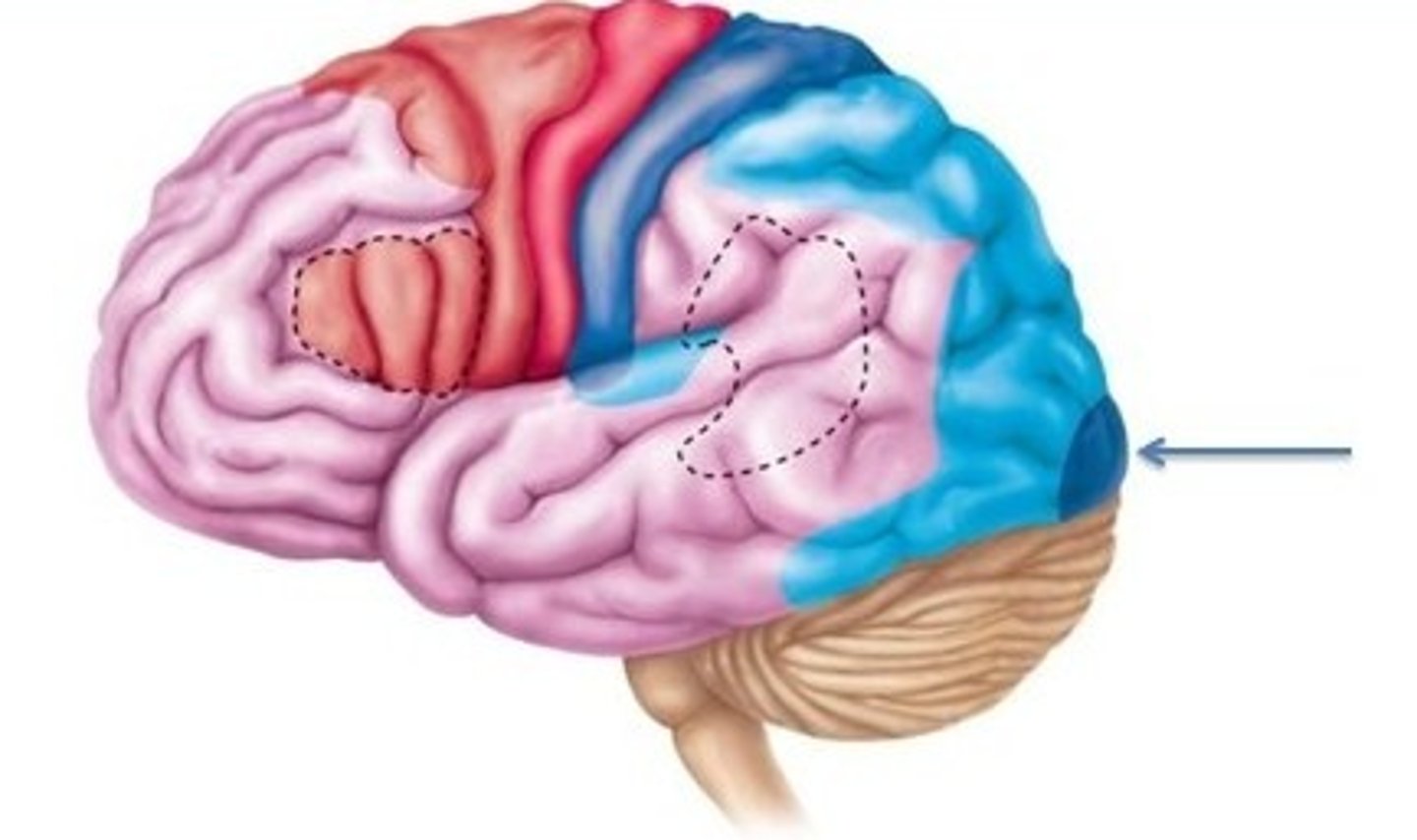
auditory area
-involves in hearing
-receives information from both ears
-processes auditory information
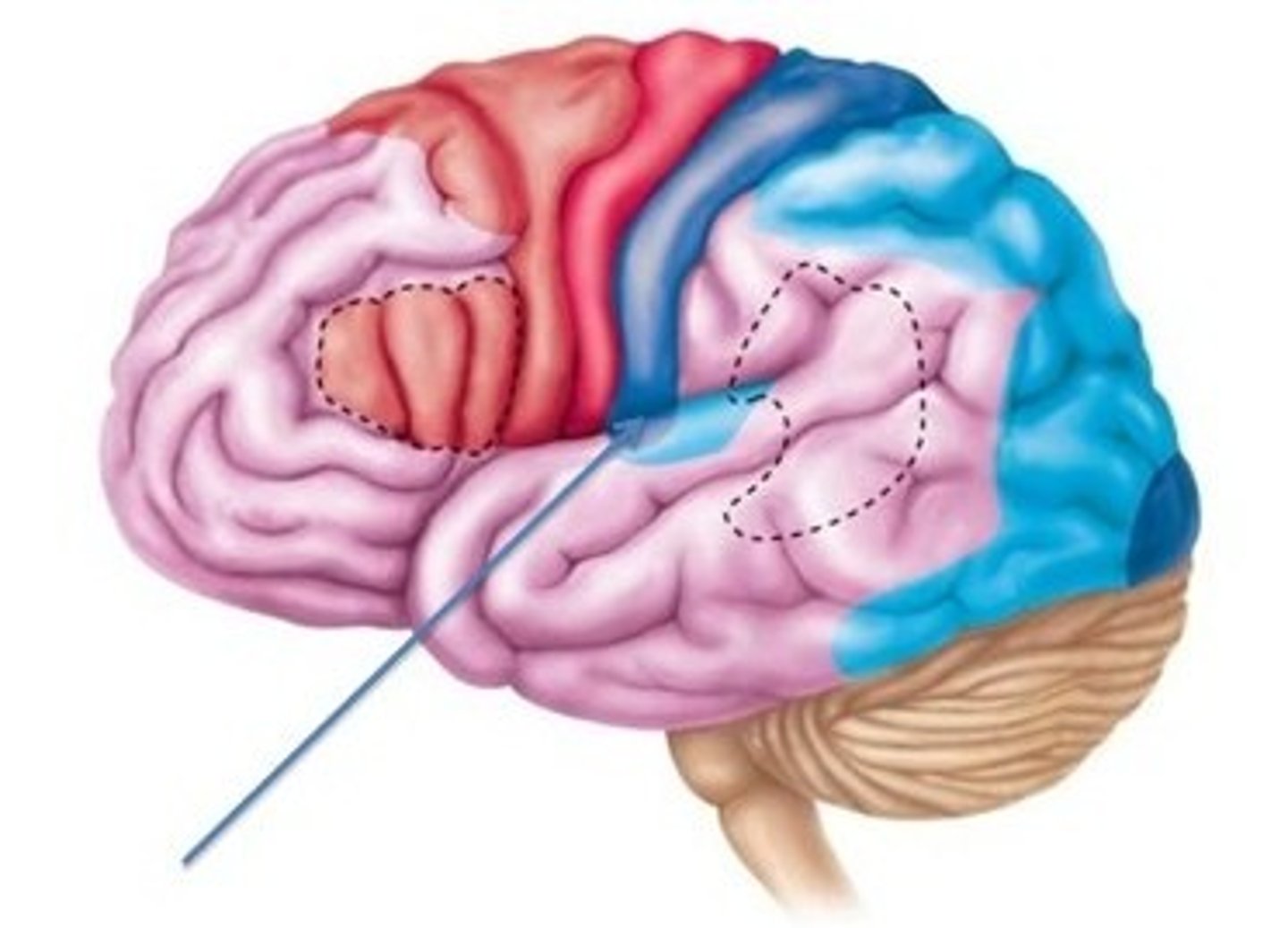
Broca's area
-controls speech production
-damage to it leads to broca's aphasia
-difficulty remembering and forming words
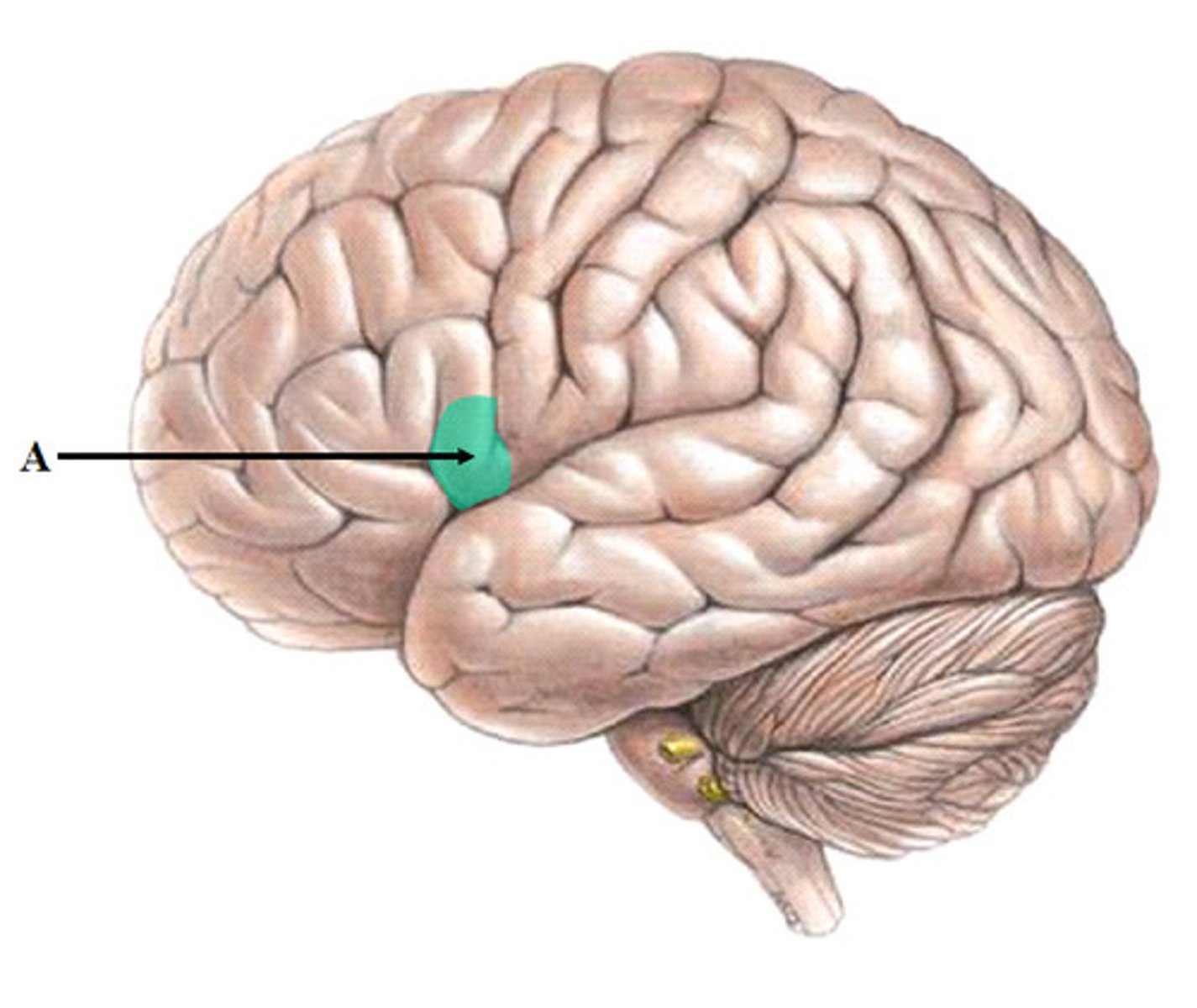
Wernicke's area
-to do with understanding speech
-damage to this area leads to wernicke's aphasia
-can speak perfectly but can't understand speech
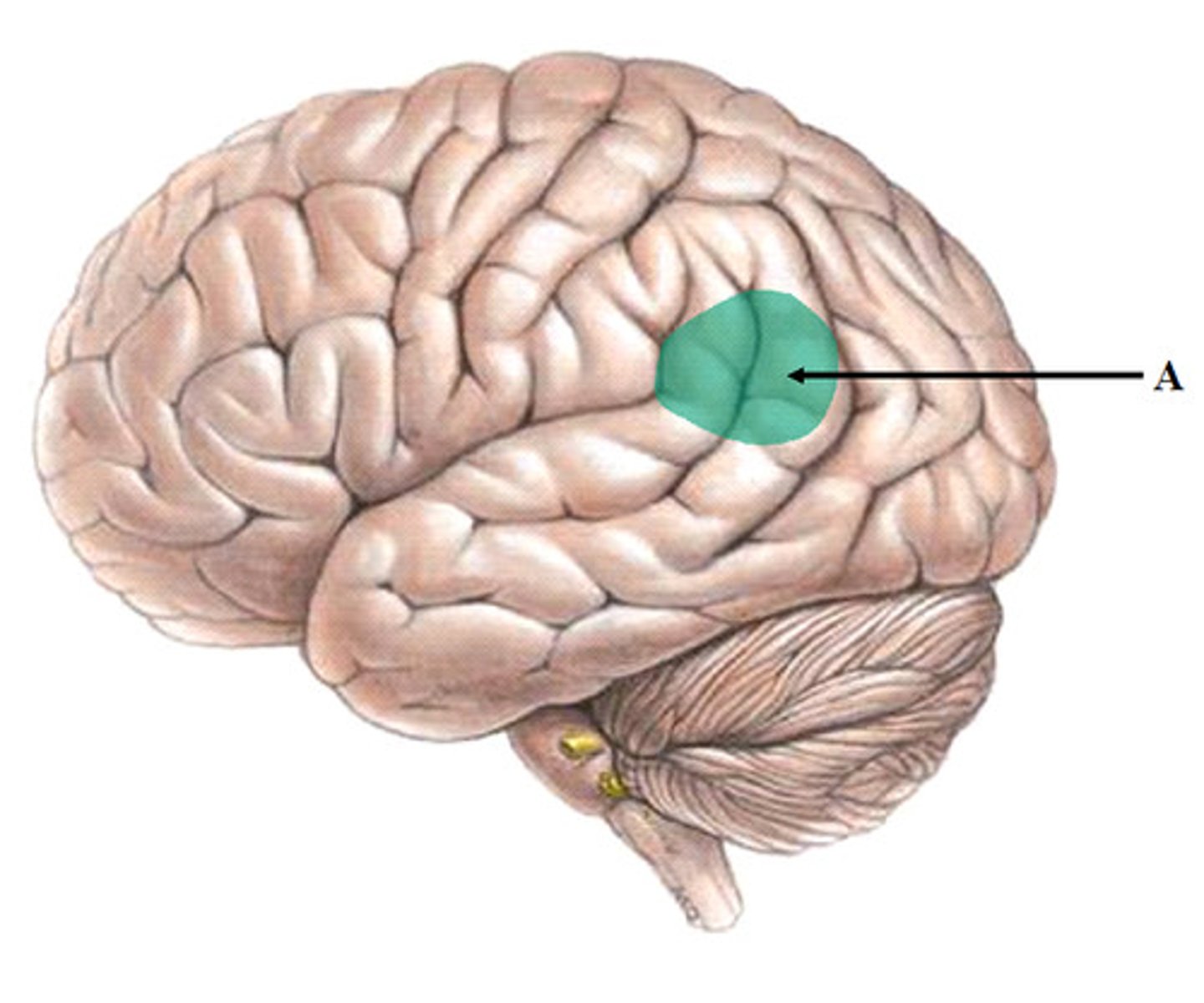
Cognitive neuroscience definition
the scientific study of brain structures on metal processes
how the structure and function of the brain relate to behaviour and cognition
-low levels of neurotransmitter serotonin linked to depression
CT scan
-lots cross-section x-rays taken
-all images put together to build detailed picture
Advantages:
-Useful for revealing abnormal structures in the brain (ie tumors)
-Quality of images better than x-rays
Disadvantages:
-more radiation than x-rays so can't be used often
-only provide structural information

PET scan
-allows measuring of brain activity
-injected with radioactive glucose
-active areas absorb the most glucose
Advantages:
-can show brain in action
-show localisation of functions and link brain areas used for certain activities
Disadvantages:
-extremely expensive so not easily avaliable
-results can be difficult to interpret
-ethical issues with injecting radioactivity
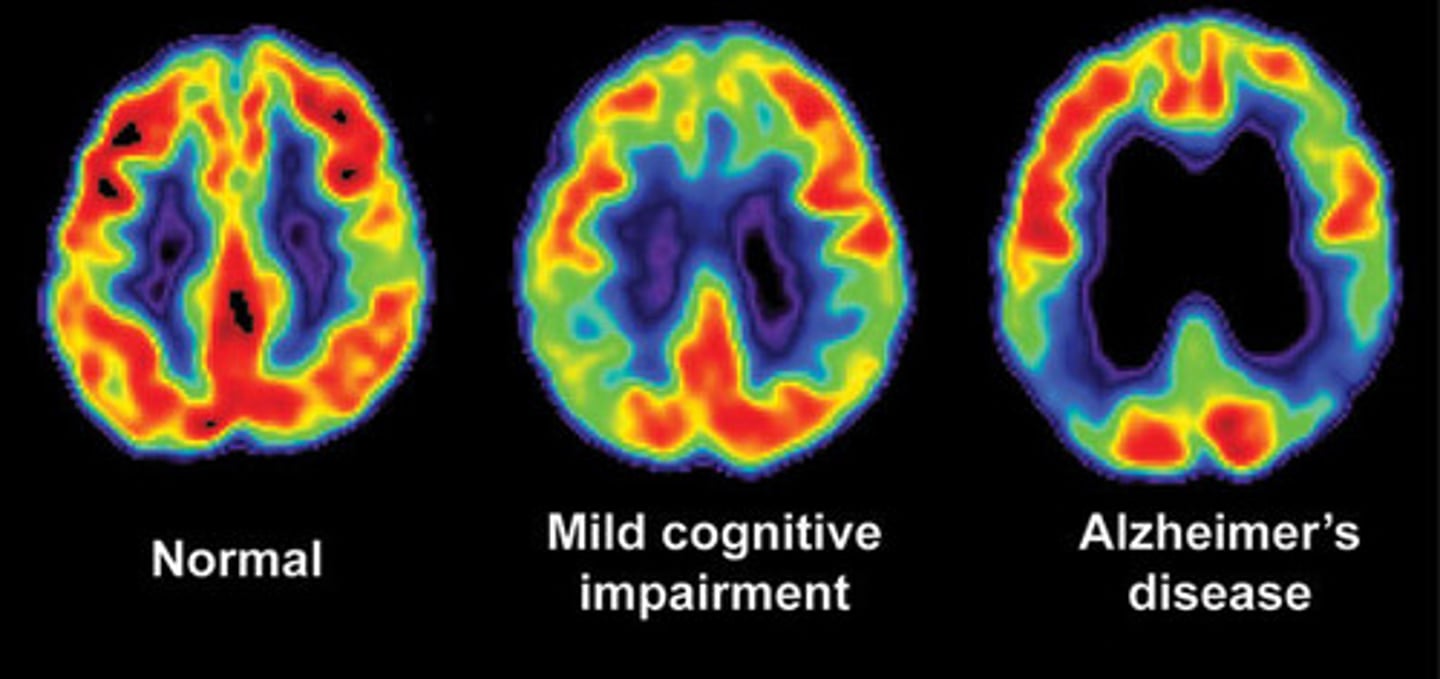
fMRI scan
-uses radio waves to measure blood oxygen levels
-most active areas will use more oxygen
-3d images shown on screen
Advantages:
-shows areas used at any one time
-safe; doesn't use radiation
-produces clear and accurate images
Disadvantages:
-expensive
-effective only in still person
-5 sec delay between brain activity and onscreen, can cause problem when trying to interpret received data
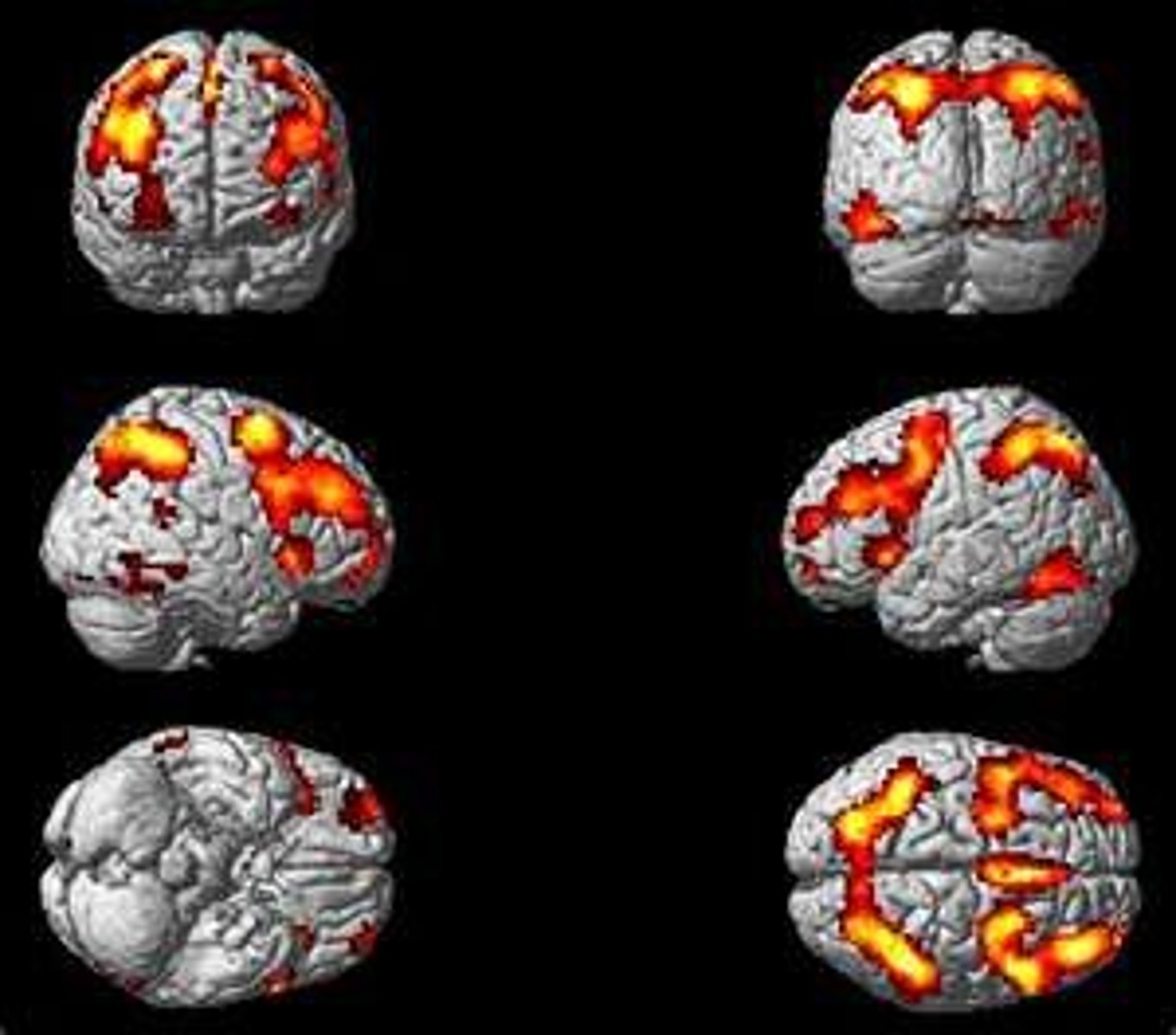
Tulving's 'gold' memory study AO1
-Aim: To explore connections between types of memory and brain activity
Study method: Case study
-Method: 6 participants injected with mildly radioactive gold isotope
-spread into blood stream to brain
-short half life, no risk
-distribution of these particles measured using form of PET called regional cerebral blood flow (measures blood flow in different parts of the brain)
-compared episodic(personal events/memories) to semantic memory(knowledge)
-participant lay on couch, eyes closed thinking about a topic of their choice
-after 60 seconds gold isotope was injected
-after 7-8 secs a reading of rCBF was taken.
-lasted 2.4 seconds and consisted of 12 rapid
scans of 0.2 secs each
-each participant experienced 8 trails with 2 minte rest between each one
-Involved 2 kinds of memory with two time periods for each one (recent and remote) and each was twice investigated
-Results:
- 3 participants were dropped for inconsistent results
-3 showed clear differences in blood flow patterns depending on whether they were remembering episodic or semantic memories
-difference same regardless of recent or remote
-episodic memory showed more activation of the frontal and temporal lobes
-semantic produced more activation in the parietal and occipital lobes of the cerebral cortex
-Conclusion: Semantic memories produce activity in different parts of the brain
Tulving's 'gold' memory study AO3
-one of the first to show how we can investigate cognitive processes promoting further research
-only 3 showed consistent results suggesting it's not applicable to all
-no way of controlling what people were actually thinking
how can neurological damage, eg stroke or injury can affect motor abilities and behaviour.
-stroke: blood supply to brain interrupted
-effect on motor area: damage to right side affects left movement
-struggle with fine motor skill (holding a pen)
-or more complex movements (walking)
-Broca and wernicke's aphasia
-Neurohabilitaion:
-for most effects of brain injury are temporary
-may be able to regain some of lost abilities by retraining other parts to take over
-'plastic' describes how the brain can reorganize itself to reduce the effects of neurological damage
Penfield's study of the interpretive cortex results
Results:
-stimulation applied to the visual area:
-patients reported color and crude outlines of shapes
-stimulation applied to somatosensory area:
-produced tingling sensation or false sense of movement
-If stimulation was applied to either temporal lobe there were two responses:
-Experiences: -patients described things they
experienced in the past as though they were
reliving the events
-memories were clear and vivid but patient
was also aware of events around them
-each time the same area was stimulated they
had the same experience
-Interpretations: -when other cells were
stimulated patients reported feelings related
to experiences